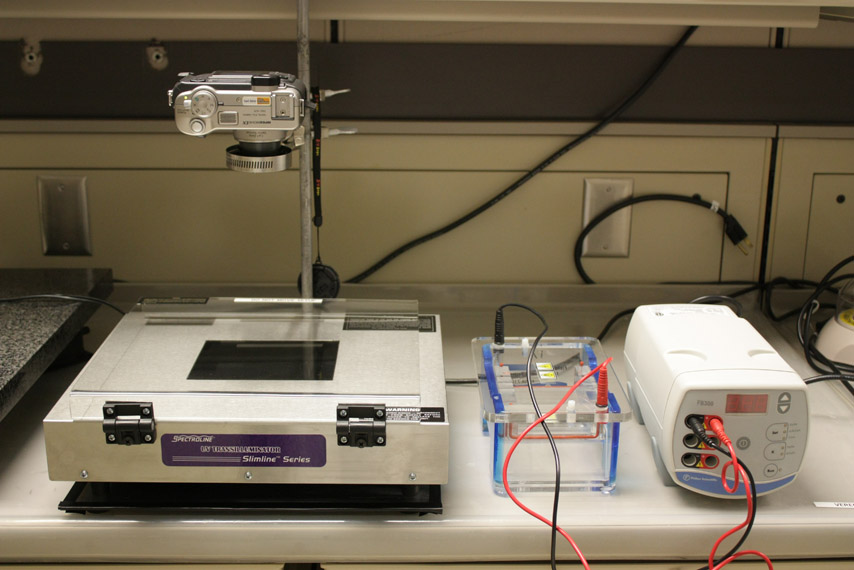|
Nanolab uses the gel electrophoresis setup to separate and analyze molecules and solution compounds used for BioLED fabrication. The interactions of surfactants, fluorescent dyes and DNA can be studied easily. The gel electrophoresis system consists of a horizontal electrophoresis chamber supported by a power supply. The matrix used to separate the analytes consists of the crosslinked polymer agarose, which is submerged into a buffer solution, necessary to maintain a constant pH and a certain ion concentration allowing an efficient and constant charge transport during the experiment. To make DNA samples visible a poststaining procedure using ethidium bromide as intercalating agent is performed. The analytes are visualized by UV transillumination and photographed by a digital camera mounted above the light source, equiped with an optical filter to reduce background illumination. The separation of analyte solutions during electrophoresis is achieved by the electric field applied between the anode and the cathode, located on the two opposite sites of the gel matrix. The gel matrix serves the purpose of providing a stable medium of defined pore size (agarose gel pore size may be varied from 150 to 500 nm pore size) and low charge induced interactions with the analyte. The separation is ruled by various properties of the sample molecules like electrical charge, size and shape. The separation quality can be influenced by the concentration of the gel matrix, the pH, type and ionic strength of the buffer solution and instrument settings like voltage and running time.
|
